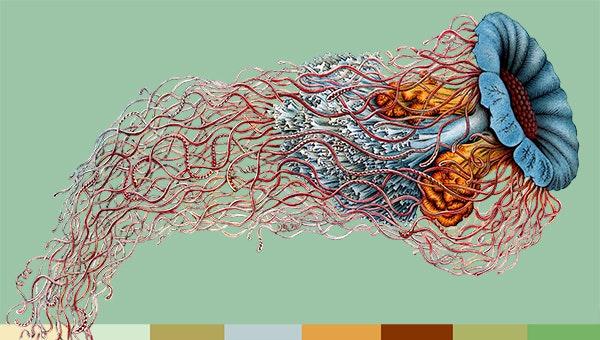MOOC List is learner-supported. When you buy through links on our site, we may earn an affiliate commission.

MOOC List is learner-supported. When you buy through links on our site, we may earn an affiliate commission.
Other themes include:
- Reconnaissance of ancient primordial life before the first cell evolved
- The entire ~4-billion-year development of single- and multi-celled life through the lens of the Tree of Life
- The influence of Earth system processes (meteor impacts, volcanoes, ice sheets) on shaping and structuring the Tree of Life
This synthesis emphasizes the universality of the emergence of life as a prelude for the search for extraterrestrial life.
Syllabus
WEEK 1
Orientation
In this module, you will become familiar with the course, your instructor, your classmates, and our learning environment.
Geological Time and the Nature of Science
The week begins with a discussion of the historical and philosophical approaches that have been developed for the completion of scientific research, with the work of Professor Carl Woese evaluated as an example. The basic tools required for this type of scientific reasoning and the ability to overcome the challenging concepts of scale and complexity are then presented. Finally, we'll explore the dynamic formation of the Earth itself with respect to the environmental conditions present on the earliest and most ancient version of planet Earth.
WEEK 2
The Tree of Life and Early Earth Environments
The advent of life on Earth came about as a result of a remarkable confluence of physical, chemical, and biological processes, all of which were intrinsically linked to rapidly changing early Earth environments. Within this context, cutting-edge approaches in molecular phylogeny by Professor Carl Woese revealed new understandings of the emergence of life and the possible distribution of life within the cosmos. All this and more will be explored in this week's lessons!
WEEK 3
Fossilization and Precambrian Life-Earth Interaction
This week, you'll explore how scientists interpret ancient fossilized life, which yields remarkably detailed and complete reconstructions of the lifestyles of ancient organisms that have been deceased for hundreds, thousands, millions, and even billions of years. These reconstructions provide valuable information regarding the evolutionary success of organism morphology and lifestyle.
WEEK 4
Paleozoic Life After the Advent of Skeletons
This week, you'll learn more about the Cambrian Explosion, which led to the development of external hard skeleton components at 542 million years before present. The initial successes of the invertebrates were shortly followed by the appearance of vertebrates with internal skeletons. Life then utilized these newfound evolutionary capabilities, beginning distinct cycles of radiation, diversification, and extinction, which define the three great Eukarya faunas of the Phanerozoic.
WEEK 5
Paleozoic Plants, Reptiles, and the Transition to Land
In the early Paleozoic, plants evolved to leave the water and invade the terrestrial landscape. Following this transition, vertebrates emerged into land-based ecosystems, and Carbon Dioxide concentrations increased in the atmosphere. The greenhouse warming of the Earth propelled the success of both prevascular and vascular plants, as well as the related terrestrial radiation of the three lineages of the reptiles. This week, you'll also learn about the Permian-Triassic mass extinction and later environmental changes that opened the door to the rise of the diapsids.
WEEK 6
Mesozoic Reign of the Dinosaurs and the Development of Flight
This week, you'll learn more about the Permian-Triassic extinction event, which caused more than 80% of life to go extinct. This opened vast swaths of ecological opportunity for radiation and diversification of life during the Mesozoic. You'll learn about symbiosis, which was widely utilized during this period, as well as the fascinating lineage of diapsid reptiles that rose to replace the synapsid predators of the late Paleozoic. We'll also discuss the rise of the dinosaurs, as well as the catastrophic meteor impact that drove the dinosaurs to extinction.
WEEK 7
Cenozoic Mammals and Global Environmental Change
With the demise of the dinosaurs, mammals rapidly radiated and diversified during the Cenozoic. The combination of abundant food sources and significant fluctuations in global climate fostered extreme variations in morphology, body size, and interaction with the environment. You'll learn why mammals had a distinct advantage over previous groups, and you'll also have the opportunity to explore multiple theories on primate and hominoid evolution in the context of global conditions during this period.
WEEK 8
Astrobiology and the Search for Life in the Cosmos
No matter where you are or what you believe, sometime in your life you will look up into the sky and ask: What is out there? Where are we going? Is there life elsewhere in the universe?
MOOC List is learner-supported. When you buy through links on our site, we may earn an affiliate commission.
MOOC List is learner-supported. When you buy through links on our site, we may earn an affiliate commission.
